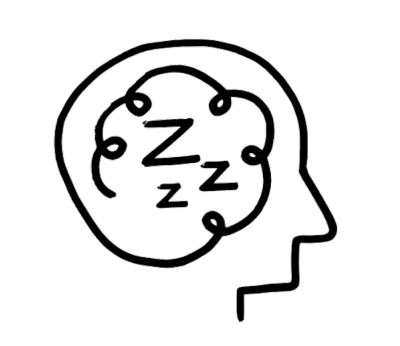What is EMDR?
Eye movement desensitisation and reprocessing (EMDR) is a type of guided therapy that may help you feel less distress caused by memories, thoughts, and emotions related to traumatic experiences.
Traumatic experiences can be sudden, out-of-the-blue things that happen to us, like an accident or assault, or they can be ongoing experiences, like growing up in an abusive household. Recognising that you may need help feeling safe again and rebuilding your confidence is a huge first step.
As a newer psychotherapy approach, EMDR is proving to be a popular tool for the many Australians experiencing mental health conditions such as post-traumatic stress disorder (PTSD).
When it comes to trauma counselling, there is a growing body of evidence that suggests EMDR is an innovative and effective treatment for people who have not had success with other therapies such as cognitive behavioural therapy (CBT).
How does EMDR work?
EMDR is a type of desensitisation treatment that works by helping you:
- Recognise that a distressing experience is part of the past rather than an ongoing experience in the present
- Recall a traumatic memory without experiencing the emotions of it all over again
- Reorganise where a traumatic memory or difficult experience is stored in the brain.
Traumatic experiences can leave us with memories that are fundamentally different to the ones we typically form. Unlike a standard memory that feels like part of your past, a traumatic memory or ‘flashback’, can cause you to relive all of the emotions from a traumatic event over and over again.
- For example, a traumatic memory or thought may:
- Make it feel like you’re reliving the traumatic event for the first time
- Trigger physical symptoms such as raised heart rate, sweating, dizziness, or a panic attack
- Cause you to feel anxious, angry, sad, confused or numb in response.
A key aspect of EMDR involves silently recalling a memory while your brain is manually prompted to go into a memory processing mode similar to that seen in rapid eye movement (REM) sleep.
An EMDR therapist may do this by having you follow their finger with your eyes or use tapping, vibration, or sounds. Along with some light verbal guidance, this stimulation is a bit like giving your brain a helpful nudge, encouraging it to sort through and make sense of emotional experiences that might have been too overwhelming to deal with before.
An easy way to think about memories and the brain is to imagine you have a mental filing cabinet that gets organised while you sleep. Most of our memories are easy to file away but traumatic ones can often remain ‘un-filed’ and available to cause us distress throughout our lives.
EMDR can reduce the emotional impact of traumatic memory by enabling you to look at it in a new way and then find a safe and non-disruptive place for it in your mental filing cabinet.
Watch this video to learn more about EMDR and how it works.
Benefits of EMDR
EMDR has a strong evidence base for treating trauma-related distress and post-traumatic stress disorder (PTSD).
When compared to traditional talk therapies such as cognitive behavioural therapy (CBT), EMDR is a popular alternative because it can be more time efficient, less confronting and easier to complete.
On average, people need between three and seven EMDR sessions compared to other types of therapy like CBT. CBT can take months or even years and often involves ‘homework’ that’s done outside of a session.
Given that the impacts of trauma look and feel different for everyone, it’s important to remember that the healing process will also vary. This means you might process a traumatic memory in a single 90-minute EMDR session while someone else might need seven or more.
One of the biggest benefits of EMDR is that you’re not typically required to talk about the details of your trauma, have extended periods of exposure to triggers, or do any further work outside of the session.
Benefits of EMDR:
- Time effective: Results can be achieved in a significantly shorter time frame compared to other trauma treatments
- Less confronting: EMDR doesn’t require you to talk about your trauma in detail
- Easier to complete: EMDR has a higher completion rate compared to trauma treatments such as exposure therapy.
“After my dog died suddenly in an accident, I was left with distressing memories whenever I was near the location of his death. EMDR helped soften the images, enabling me to work through the grieving process and accept what happened.”
What can EMDR help with?
Currently, EMDR has a strong evidence base for the treatment of trauma, including both isolated incidents as well as more complex, long-term issues.
EMDR has been shown to be effective in the treatment of:
However, there is emerging evidence showing that EMDR can also be helpful in treating chronic pain conditions associated with a traumatic event.
While some people turn to EMDR for treating depression, complicated grief, and certain phobias, there currently isn’t enough evidence to support the effectiveness of EMDR for non-trauma-related disorders and conditions.
If you are hoping to use EMDR for other applications, it’s important to remember that new research is emerging every day, so be sure to speak with your GP about any updates regarding EMDR as a potential treatment option. If you’re ready to speak to a therapist, you can read our article on finding the right therapist for you.
No matter what you’re experiencing, there are effective treatments available. Remember, it’s okay to ask for help. Lifeline is here if you need to talk.
How can I get started with EMDR?
EMDR is quickly becoming a popular treatment for trauma because of its many benefits.
While some self-administered techniques do exist, it’s important to note that EMDR is most effective when guided by a trained EMDR therapist. This is because they can help you get the most out of the treatment and stay on track with your goals.
Here are a few frequently asked questions about getting started with EMDR:
- Can you do EMDR on yourself?
It is not recommended to do EMDR on yourself. Self-administered EMDR can result in:
- Ineffective results: If doing EMDR on yourself, you may not be able to process your traumatic memories completely due to the difficulty of effectively addressing the root cause of your distress.
- Risk of re-traumatisation: If doing EMDR on yourself, you may find the experience emotionally intense and overwhelming. If not supported through these emotions, you risk being re-traumatised by the memory you’re recalling.
- Do I need a referral for EMDR?
- Where can I find an EMDR therapist in Australia?
What can I expect in a typical EMDR session?
Once you’ve connected with the EMDR therapist that’s right for you, you’ll be booked for a session that typically consists of eight phases.
Keep in mind that you may not do all of the phases in each session and it's common to move backward and forward in the phases depending on personal experiences and individual needs.
- Phase 1 & 2: Your history and treatment planning
- Phase 3: Assessment
- Phases 4 & 5: Desensitisation and installation
- Phases 6 & 7: Body scan and closure
- Phase 8: Re-evaluation.
Below, we've outlined how these phases typically work so you know what to expect in your EMDR session.
- Phases 1 & 2: Client history and preparation
In the client history and preparation phases, which only occur during your first session, your therapist will ask questions to get to know you and discuss the specific reason that brought you in, as well as behaviours and symptoms you’d like to be free from. This is important for establishing trust between you and your therapist as well as for creating a treatment plan tailored to your specific needs.
EMDR doesn’t typically require you to discuss disturbing memories in detail, however, your therapist may ask what’s brought you in for treatment.
You can say that you’re trying EMDR because:
- ‘I’m upset about something that happened to me as a child.’
- ‘I was in a bad accident.’
- ‘I’m not comfortable getting inside a vehicle.’
Once clear on what your treatment needs are, your therapist will explain the EMDR process and share what you can expect during and after the session. You may be given relaxation techniques to keep calm if you begin to experience any strong emotions.
- Phase 3: Assessment
- Phases 4 & 5: Desensitisation and installation
- Phases 6 & 7: Body scan and closure
- Phase 8: Re-evaluation
Myths and misconceptions surrounding EMDR
Because EMDR is a relatively new psychotherapy, it’s understandable that there are myths and misconceptions surrounding it.
Common myths and misconceptions:
- EMDR erases memories
- EMDR can create false memories
- EMDR is a form of coercive control.
There is no evidence to support these claims. If you or someone you love is considering EMDR for trauma treatment, you can rest assured that there is a strong evidence base supporting its effectiveness and safety.






